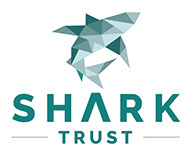Marine Life & Conservation
Photo of seabirds using plastics to build their nests highly commended in UPY

A photo of gannets using discarded nets and ropes to build their nests highlights the increasing problem of plastic pollution on marine life. The image was ‘highly commended’ in the 2020 Underwater Photographer of the Year competition on Saturday 22 February 2020.
Simon J Pierce, Marine Megafauna Foundation and www.naturetripper.com
Dr. Simon J Pierce, a principal scientist at the Marine Megafauna Foundation and wildlife photographer for Nature Tripper, captured the image at Runde Island, off the southern coast of Norway. The island is a seasonal home to over half a million seabirds, including the northern gannets he was there to photograph.
“We were bouncing around in a small boat, so it was tough to compose a photo. I could see some colour among the gannets’ nests on the cliff, and I was pretty sure there weren’t supposed to be bright colours in seabird nests, so I bumped my shutter speed up and hoped for the best. When I downloaded the pictures to my computer later, I just gasped. The nests were overflowing with fishing debris,” says Pierce.
Gannets normally build their nests from seaweed and grass floating on the ocean’s surface near the island. Increasingly, the seabirds are using discarded netting, ropes, and packaging straps from fisheries instead. This fishing waste seems to be becoming more common than the natural materials they instinctively gather. A recent survey at Runde Island found that 97% of nests contained man-made debris. Newborn chicks, and even adult gannets, are routinely entangled and killed in these tough and non-biodegradable materials.
Peter Rowlands, Chair of the Judging Committee for the Underwater Photographer of the Year competition in 2020, added, “We have given them no choice. Their natural materials of seaweed and grass have been smothered by indestructible ghost traps which fishermen have lost or intentionally discarded. We, and the fishermen especially, should hang our heads in shame and then do everything in our power to reverse this.” Pierce’s image of the gannets was highly commended in the “Marine Conservation” category of the competition.
Scientists are increasingly revealing the insidious threat posed by plastic pollution. The Marine Megafauna Foundation is a non-profit organisation researching manta rays, whale sharks and other large marine animals threatened with extinction. Elitza Germanov, also a researcher from the Marine Megafauna Foundation and PhD candidate at Murdoch University, has been investigating the presence of plastics in feeding areas used manta rays and whale sharks in Indonesia. “Manta rays and whale sharks are large filter-feeding fish that can ingest microplastics directly from polluted water or indirectly through the contaminated plankton they feed on,” says Germanov. With time, plastics break down into smaller pieces called microplastics that these large marine filter feeders might accidentally scoop up because they float among their prey.
Germanov’s research found that reef manta rays foraging in the waters off Bali and in Komodo National Park may swallow up to 63 pieces of plastic every hour. Whale sharks that seasonally visit the island of Java are even more affected, ingesting up to 137 bits of plastic each hour.
Pierce says that, for the gannets at least, a quick turnaround in fortune is possible: “Reducing the fishing pressure near nesting colonies has been shown to lead to fast and measurable declines in the number of affected nests. That suggests a range of practical solutions, such as reducing the pollution from the fishing boats themselves, minimise net fisheries in the local region, or create protected areas that allow the ecosystem and nesting areas to recover.”
“There’s a lot we can do as consumers,” added Pierce. “But it’s clear that industries that use plastics in single-use packaging, and the fishing industry that is responsible for a lot of the discards seen here in Norway, need to come to the table and help to fix this.”
For more information about the work of the Marine Megafauna Foundation please visit their website by clicking here.
Marine Life & Conservation
Shark Trust launches Oceanic 31 Shark Art Auction

 After a two-year tour of UK art galleries, community spaces and aquariums, the Shark Trust’s acclaimed Oceanic31 exhibition takes its final bow at the Royal Geographical Society later this month. And the unique collection of artwork, depicting 31 species of oceanic sharks and rays, donated by 31 artists, is now open for bids from art lovers and shark enthusiasts. The online auction, launched today, will close on the 7th December at 8pm (BST). The money raised will support the Shark Trust Oceanics Programme.
After a two-year tour of UK art galleries, community spaces and aquariums, the Shark Trust’s acclaimed Oceanic31 exhibition takes its final bow at the Royal Geographical Society later this month. And the unique collection of artwork, depicting 31 species of oceanic sharks and rays, donated by 31 artists, is now open for bids from art lovers and shark enthusiasts. The online auction, launched today, will close on the 7th December at 8pm (BST). The money raised will support the Shark Trust Oceanics Programme.
People can now bid on 27 of the artworks by visiting this website:
https://superstars-auctions.com/sharktrustauction
It is a chance to own a beautiful piece of original art and to support the Shark Trust. The timing of the auction also means that these would make a very special Christmas gift for any shark-lover.
- Bigeye Thresher Shark by Janina Rossiter
- Carcharodon carcharias by Jimmy Higgs
- Croc VR 2030 by Tom Mead
- Oceanic Whitetip by ATM
- Silky Street by ScapaJoe
The diversity of pieces mirrors that of the sharks and rays they represent. You can bid on paintings, digital creations, sculptures, mixed media and more. You can pick your favourite artist or species of shark. Or you can select the perfect artwork to make a statement in your home or office. Whichever you choose, you will be supporting the work to protect these amazing animals.
One of the pieces of art has been selected to be auctioned live by Steve Backshall at the For the Love of Sharks event at the Royal Geographical Society in London on the 29th November. In addition to this, two further pieces will be raffled at this event, giving people a chance to win an incredible piece of shark art. For the Love of Sharks is the Shark Trust’s flagship evening. A night to celebrate sharks. Steve Backshall is the headline speaker at this event that will see other prominent shark advocates join him on stage.
Tickets for the event can be snapped up here:
https://thesharktrust.org.uk/Event/flos24
Those that would like to see the Oceanic 31 exhibition have one final chance. It is being displayed at the Pavilion at the Royal Geographic Society from 26th November until the 7th December. Entry is free.
Find out more here:
https://www.rgs.org/events/upcoming-events/oceanic-31
Paul Cox, Shark Trust CEO, Said “This exhibition has given us the opportunity to reach out to a new audience. And inspire more people with the wonderful sharks and rays on which our Big Shark Pledge campaign is based. We are immensely grateful to the 31 artists who have worked so hard to create these works.”
Bid for your favourite Oceanic 31 artwork here:
https://superstars-auctions.com/sharktrustauction
Banner Image: Smooth Hammerhead by Alicia Hayden
Marine Life & Conservation
Meet Steve Backshall in the Bite-Back Prize Draw

Until 28 November, prizes worth a massive £10,000 – including experiences, products and tuition – feature in a line-up of items that can be won for £5 in an online prize draw to celebrate Bite-Back Shark & Marine Conservation’s 20th anniversary and help generate crucial funds for the future.
Top of the list of prizes is the chance to spend time with adventurer and wildlife expert Steve Backshall, a workout session with Nat Geo star Aldo Kane, a kayaking trip alongside white-water expert and diver Sal Montgomery and a Zoom call with ‘shark whisperer’ Cristina Zenato.
On top of that, some of the most admired companies in the diving and scuba industry have been quick to support the charity with fabulous prizes that make the £5 ticket price worth more than just a flutter.
Master Liveaboards, BSAC, Midlands Diving Chamber, Go Freediving and Blue Shark Snorkel have all generously donated experience prizes, while celebrated photographer Alex Mustard has donated a print and artists Scott Gleed and Olivier Leger have donated a sculpture and illustration to help boost the fundraising pot.
Fourth Element has donated Ocean Positive gear and LA watch company Nodus has gifted the charity a stunning dive watch. For land lovers, the charity has included a five star London hotel stay at Bankside Hotel plus a family visit to Longleat Safari Park in the roster of prizes.
Campaign director for Bite-Back, Graham Buckingham, said: “We’ve been overwhelmed with support from companies and individuals that we truly admire and who have supported us on our 20 year journey and we’re truly grateful to them all. While we feel incredibly proud of our achievements over the past two decades – and we are super excited about the next chapter – this prize draw isn’t a vanity project. It represents a real lifeline to our work and important advancements in the global protection of sharks. So we hope divers, dive clubs and even bargain hunters grab some tickets to make this a massive success.”
The charity hopes that the prize draw will generate crucial funds to launch a brand new, ground-breaking, campaign to enrol the public and increase support for the protection of sharks around the world.
To enter the competition visit www.bite-back.com/prizedraw. The prize winners will be announced on 1 December 2024.
-

 News1 month ago
News1 month agoIconic SS United States to become the World’s Largest Artificial Reef
-

 Blogs3 months ago
Blogs3 months agoNovoScuba’s Game-Changing Approach for Dive Store Owners: WE PAY YOU!
-

 News2 months ago
News2 months agoBook Review – 52 Assignments: Underwater Photography
-

 Marine Life & Conservation3 months ago
Marine Life & Conservation3 months agoBook Review: Sharkpedia
-

 Gear News2 months ago
Gear News2 months agoDYNAMICNORD – New German diving brand enters the British market
-

 News1 month ago
News1 month agoExploring Cenote El Pit: A Diver’s Dream
-

 Gear News2 months ago
Gear News2 months agoTry BARE drysuits (and maybe even win one!) this Friday with Sea & Sea at North West Dive Fest
-

 News2 months ago
News2 months agoComing Soon – 52 Assignments









